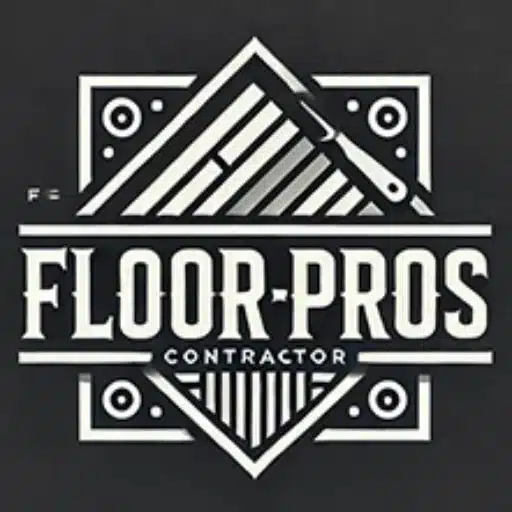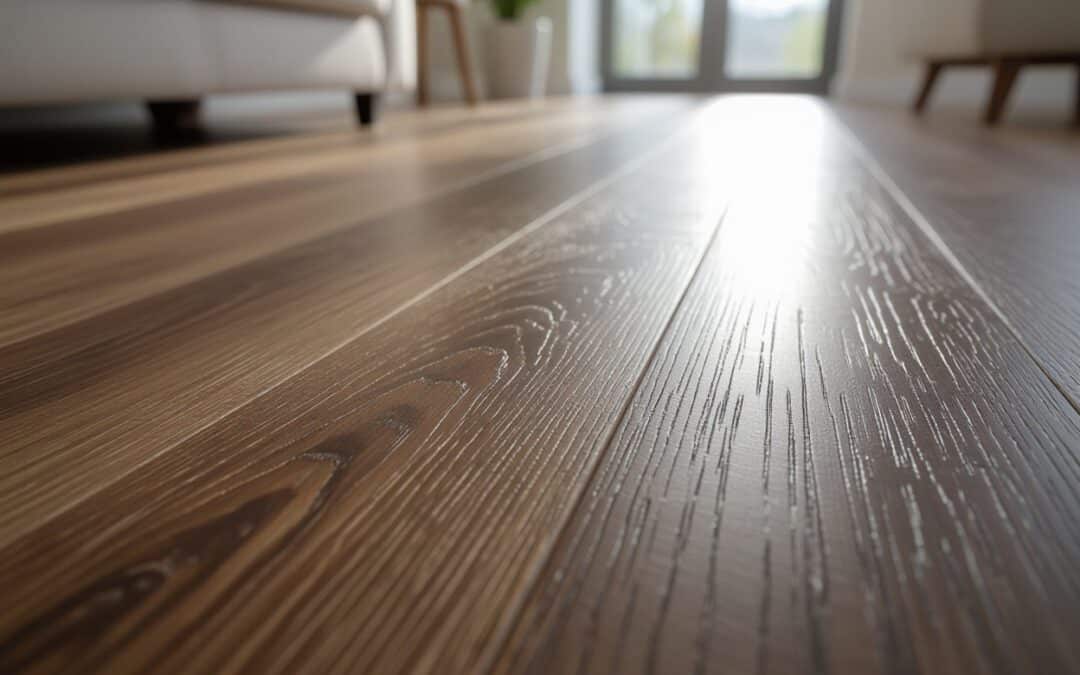
by c4cadmin | Aug 26, 2025 | Flooring
What 7 Secrets Make Vinyl Flooring Remarkably Durable?
When it comes to floors that can withstand life’s daily wear and tear, vinyl flooring stands out as one of the most durable options available. At Floors Pros, we’ve seen homeowners across Allen and surrounding areas choose vinyl not just for its style, but for its unbeatable durability. With the right construction, protective layers, and simple care, vinyl flooring can look fresh for years—even in busy homes. Let’s walk through the seven secrets that make vinyl flooring remarkably durable.
The Robust Construction: Layers That Shield
Multi-layer builds give vinyl flooring its backbone: a clear wear layer, printed design layer, rigid or flexible core, and a stabilizing backing. Compare products; vinyl flooring with thicker wear layers and dense cores resists scratches and fading longer. You can weigh trade-offs—luxury vinyl plank for realism, LVT for tight installations, and sheet vinyl for seamless water control—so your selection matches the traffic and moisture demands.
The Shielding Power of Wear Layers
Wear layers, measured in mils, provide surface protection: 6–12 mil fits low-traffic rooms, 12–20 mil suits busy homes, and 20+ mil handles commercial use. On your vinyl flooring, urethane or aluminum-oxide coatings reduce scuffs and staining, while ceramic-enhanced coatings boost abrasion resistance. Top-rated vinyl flooring lines often publish abrasion-cycle data—check that lab information against expected wear.
Core Stability: The Role of Backing Materials
Core choices—SPC, WPC, flexible vinyl—define stiffness, dent resistance, and installation limits. SPC cores deliver rigid strength and moisture tolerance so your vinyl flooring stays flat in basements and entryways. WPC adds warmth and cushion but trades some dimensional stability. Match core type to subfloor flatness, traffic loads, and whether you’ll use underfloor heating to prevent cupping or gaps.
SPC cores typically range 3–7 mm and give high compressive strength, while WPC often spans 4–8 mm with more underfoot give; thicker cores (6–8 mm) reduce hollow sound and flex over imperfect substrates. Manufacturer testing shows that rigid cores withstand heavy rolling loads and humidity swings. Therefore, choose a core and backing combination that keeps your vinyl flooring stable, dent-resistant, and quiet underfoot.
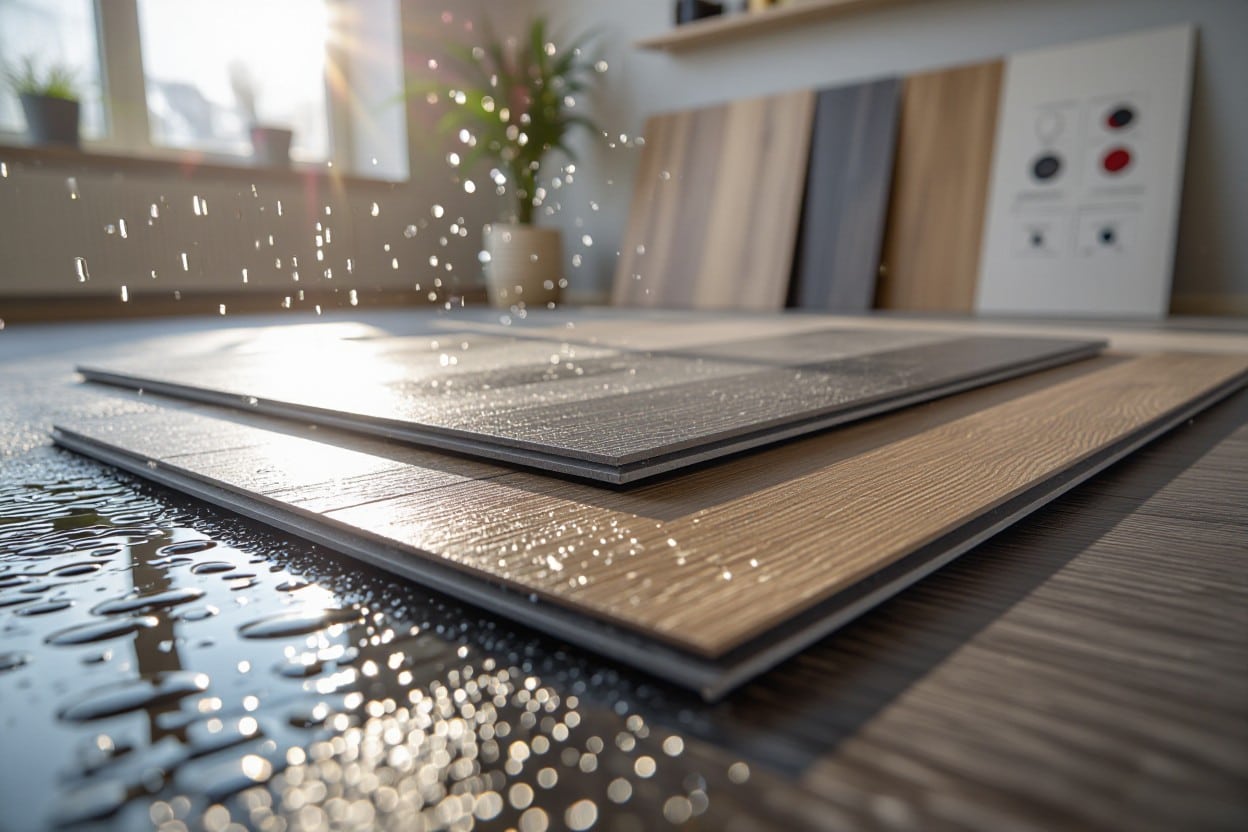
Resilience Against Nature: Water and Temperature Resistance
Many vinyl flooring products feature waterproof cores and dense wear layers, allowing your floors to withstand spills and seasonal fluctuations. You have rigid-core vinyl flooring options, such as SPC and WPC, that resist warping and are durable. Additionally, you have 100% waterproof sheet formats suitable for basements and bathrooms. The wear layers, typically 6–20 mil, protect printed visuals. Installers normally recommend 48 hours of acclimation to minimize movement.
| Resilience Snapshot |
Waterproof cores, 6–20 mil wear layers, SPC/WPC stability, 48-hour acclimation |
Water-Resistant Innovations in Vinyl Design
Manufacturers have engineered vinyl flooring with 100% waterproof cores and welded seams on sheet options, allowing you to use them in bathrooms and basements. The rigid SPC cores, featuring limestone filler, resist moisture and denting. Surface treatments, such as UV-cured polyurethane and ceramic bead topcoats, enhance scratch and stain resistance, while integrated underlayment improves sound quality and reduces subfloor moisture transfer for long-term performance.
| Waterproof Features |
SPC/WPC cores, 100% waterproof sheets, UV-cured PUR, welded seams, attached underlayment |
Temperature Control: How Vinyl Adapts
Allow the vinyl flooring to acclimate for 48 hours at the room’s normal temperature—typically 60–80°F—so that the boards settle and gaps remain predictable. Leave expansion gaps (often 1/4″) at perimeters and every long run to prevent buckling; rigid-core vinyl flooring shifts less than traditional LVT under thermal swings, giving you stable surfaces in sunlit rooms and across seasonal cycles.
| Temperature Tips |
Acclimate 48 hrs, 60–80°F install temp, 1/4″ expansion gaps, SPC more stable than LVT |
Underfloor heat works with many vinyl flooring lines if you keep the surface below about 85°F (29°C) and avoid abrupt temperature spikes; gradual increases and a compatible adhesive or floating installation prevent delamination. Test subfloor output, follow manufacturer limits, and run a moisture and temperature check before installation to protect your warranty and long-term performance.
| Radiant Heat Guidelines |
Max surface ≈85°F (29°C), gradual temp changes, verify subfloor heat, follow manufacturer specs |
The Science of Longevity: Advanced Manufacturing Techniques
Multi-layer construction, precision lamination, and heat-stable cores extend service life. A clear wear layer, high-definition décor film, and a rigid backing work together to resist abrasion, stains, and dimensional changes. You gain when wear layers reach 12–20 mil and UV-cured urethane or ceramic-bead finishes are applied; lab tests show that thicker wear layers, combined with SPC or WPC cores, keep vinyl flooring performing well over a decade under typical household use.
- Wear-layer engineering: 6–20 mil options; higher mil equals longer life for vinyl flooring.
- Core technology: SPC and WPC cores improve dimensional stability and moisture resistance in vinyl flooring.
- Printing & embossing: high-resolution décor layers with register embossing reduce visible wear and scuffing.
- Precision finishing: UV-cured coatings and texturing add scratch resistance and ease of maintenance.
Manufacturing Techniques Breakdown
| Technique |
Benefit |
| UV-cured urethane finish |
Significantly increases abrasion resistance for vinyl flooring |
| Ceramic-bead / aluminum oxide topcoat |
Boosts scratch and scuff resistance for vinyl flooring |
| Wear-layer thickness control |
12–20 mil options rated for high-traffic residential and commercial use |
The Role of PVC Technology in Durability
Advanced PVC formulations utilize higher molecular-weight resins and targeted plasticizer packages to reduce creep and enhance impact resistance, resulting in floors that resist indentation from heavy furniture and point loads. Manufacturers also incorporate stabilizers that limit UV breakdown, providing vinyl flooring with improved long-term color and dimensional stability in rooms exposed to sunlight.
Cutting-Edge Finish Options Enhancing Wear Resistance
Modern finishes combine UV-cured urethane with ceramic or aluminum-oxide particles to create micro-armor surfaces that shed scratches and scuffs while keeping maintenance simple, letting you clean without abrasive scrubbing and preserving the visual texture and gloss of your vinyl flooring.
Additional systems layer multiple thin coatings with different properties—one for slip resistance, another for chemical resistance—so you can choose LVT with a 20-mil wear layer plus an aluminum-oxide surface for commercial kitchens or a 12-mil urethane-plus-ceramic finish for busy homes, matching performance to your traffic patterns and warranty needs.
Life-Proofing Your Floors: Scratch and Dent Defense
Layering a thick wear layer and a hard, transparent coating gives your vinyl flooring real resilience. A 12–20 mil wear layer suits busy homes, while a 20–30 mil wear layer stands up to light commercial use. You’ll see fewer scratches from chairs and pet claws when manufacturers add urethane or ceramic-bead topcoats. Combined with rigid cores like SPC and routine cleaning, the right vinyl flooring keeps appearance and function under daily traffic for years.
Understanding the Scratch-Resistant Coatings
Urethane finishes fortified with ceramic-bead particles create microscopic shields that disperse abrasion, helping your vinyl flooring resist scratches from pet nails and movement of furniture. Manufacturers often apply 1–2 coats of enhanced urethane, plus a UV-cured clear coat; commercial lines sometimes add aluminum oxide. You can compare abrasion results: higher mil wear layers and ceramic-reinforced coatings outperform basic vinyl flooring in standardized scratch and wear tests.
How Dent-Resistant Properties Elevate Performance
Rigid cores, such as SPC (stone polymer composite), drastically reduce indentation, allowing your vinyl flooring to withstand heavy furniture and high heels. Two millimeters of dense core material reduces visible dents compared to flexible plank options commonly found in luxury vinyl plank (LVP) products. You’ll prefer SPC in kitchens and entryways, while WPC offers added comfort with a slightly more flexible feel. Choose vinyl flooring with reinforced backing and thicker wear layers to spread point loads from castor wheels and appliance feet.
Vinyl flooring dent resistance can be evaluated by checking core thickness (commonly 3–7 mm for rigid products) and wear layer dimensions—rigid 4–5 mm SPC cores paired with 20–30 mil top layers show markedly less indentation in busy environments. Installers report that commercial venues using 5 mm SPC with a 20 mil wear layer have maintained unmarred surfaces for years under restaurant seating and rolling carts. Therefore, your vinyl flooring, matched to those specs, reduces repair cycles and keeps floors flat and safe.
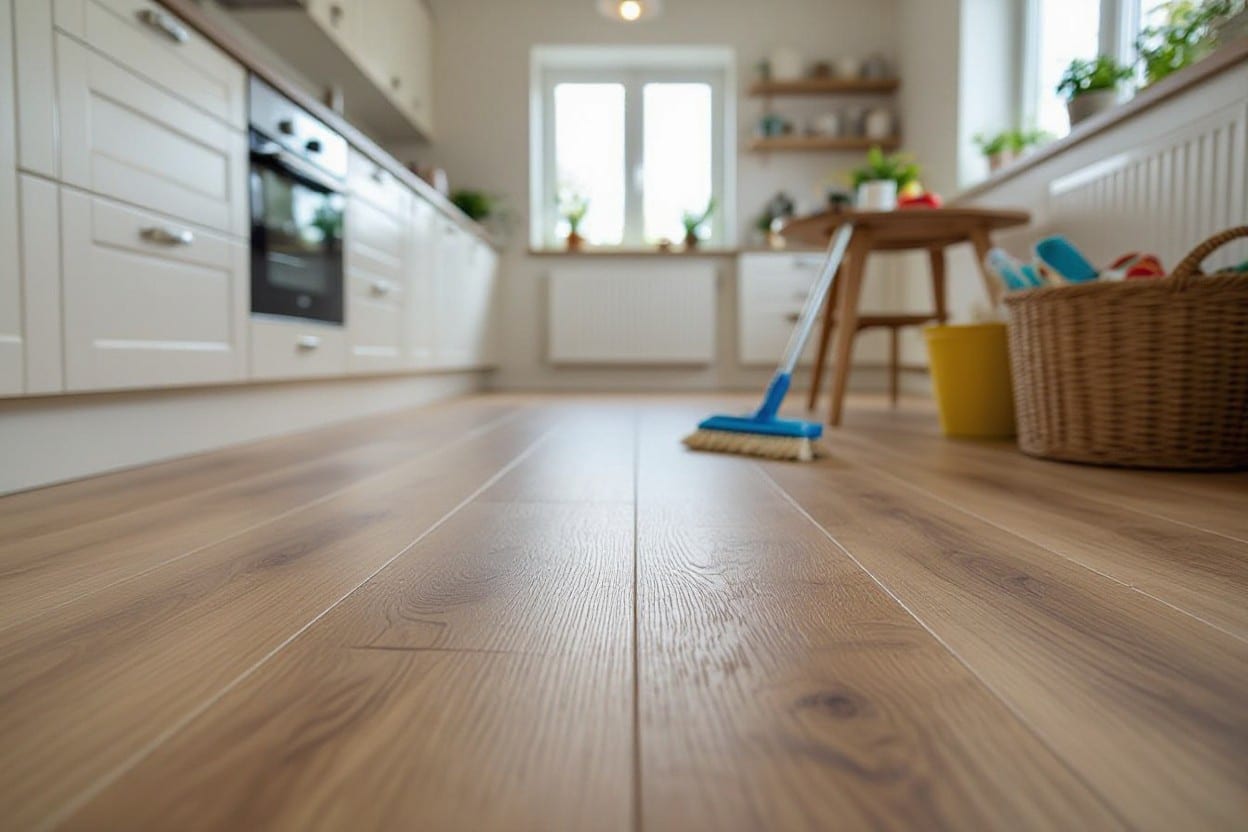
Maintenance Magic: Simple Upkeep for Lasting Beauty
Daily Care Strategies That Extend Life
Sweep or vacuum daily with a soft-brush head to remove grit that scratches the wear layer; use a microfiber mop for light cleaning and a neutral cleaner diluted per label. Place commercial-grade doormats and felt pads under furniture legs; rearrange rugs occasionally to avoid uneven fading. Avoid steam cleaners and abrasive pads. Following these simple steps extends the life of vinyl flooring and keeps your surface looking new—especially in high-traffic kitchens and entryways where vinyl flooring faces the most wear.
Deep Cleaning: Best Practices for Vinyl Floors
Schedule deep cleans every 1–3 months, depending on the level of traffic. Start by vacuuming resilient vinyl flooring with a soft-brush attachment, then mop with a pH-neutral solution specifically labeled for resilient floors. You can prevent finish breakdown by avoiding ammonia, bleach, or oil-based soaps. For commercial-grade and modern vinyl flooring, choose maintenance products that match the wear-layer rating; excessive water or high-heat steam can cause seams to lift. Proper products help preserve color and reduce micro-scratches on vinyl flooring over the years of use.
Start with a step-by-step method: use a dry-vac to remove grit, then damp-mop your vinyl flooring with one cup of pH-neutral cleaner per gallon of warm water or a manufacturer-recommended concentrate. Avoid soaking seams. Tackle scuffs with a microfiber pad and a baking-soda paste, rinse and dry thoroughly. For glue or oil spots, use isopropyl alcohol on a soft cloth, testing first. These steps help keep luxury vinyl flooring looking factory-fresh and preserve the wear layer on vinyl flooring.
The Economic Argument: Value Beyond Initial Investment
You get upfront savings because vinyl flooring often runs $2–$7 per sq ft installed versus $8–$15 for hardwood; lower material and installation costs mean faster payback. Choosing luxury vinyl flooring for kitchens and entryways gives you wear layers of 12–20 mil and warranties up to 25 years, so your floor resists dents and stains and keeps value longer.
Cost-Effectiveness of Durable Vinyl Flooring
Calculate total cost per square foot over 20 years: durable vinyl flooring typically costs $2–$7 installed and needs minimal maintenance—occasional mopping and a $30 cleaner—while hardwood can require $1,000+ refinishing. You can save 40–60% on upkeep when you pick vinyl flooring with a thicker wear layer, especially in moisture-prone spaces.
Long-Term Savings Through Reduced Replacement Rate
Higher-grade luxury vinyl flooring can last 20–25 years in residential settings and up to 10–15 years in commercial settings, resulting in reduced replacement cycles compared to carpet (7–10 years) and low-end laminate (10–15 years). You avoid teardown and disposal costs, and warranties often cover wear, so your total replacements drop substantially over a building’s lifetime. Choosing vinyl flooring with a 20-mil wear layer reduces replacements in active households.
A case study of a 5,000 sq ft boutique found that switching from carpet tile to commercial-grade luxury vinyl flooring (20-mil wear layer) cut replacement and maintenance costs by 48% over a decade; carpet required replacement twice while the vinyl only needed targeted plank swaps and a reseal in year 10. When you factor in reduced labor—installation costs drop from $3–$5 per sq ft for carpet to $1.50–$3 for vinyl flooring—and lower downtime, the lifecycle ROI becomes clear. Warranty coverage, lower disposal fees, and fewer scheduled overhauls typically translate to thousands saved per room over 15–20 years.
Wrapping Things Up
Vinyl flooring has earned its reputation as one of the most durable and versatile flooring options available today. From waterproof cores and scratch-resistant finishes to easy upkeep and long-lasting warranties, it offers real value for both homes and businesses. At Floors Pros, we help families and property owners across Allen find the right vinyl flooring option—whether that’s vinyl plank, vinyl tile, or luxury vinyl. With expert installation and the right product, you can count on vinyl flooring to deliver strength, beauty, and comfort for years to come.
FAQs
Q: What are the seven secrets that make vinyl so durable?
A: Here are seven key reasons that give vinyl flooring its long life: a thick wear layer that resists scratches; tough surface coatings like UV-cured urethane or ceramic bead; a stable core option (SPC or WPC) that prevents dents and warping; waterproof construction that blocks moisture; tight locking or strong adhesive installation that keeps seams closed; scratch and stain resistant top finishes; and low-maintenance care that removes grit. When choosing vinyl flooring, look for clear wear-layer specs, a strong finish, and a solid core for heavy use.
Q: How does the wear layer protect the floor?
A: The wear layer is the clear top film that takes the abuse — scuffs, foot traffic, and dirt. On vinyl flooring, this layer is measured in mils; higher mil counts mean more resistance in busy rooms. Finishes like urethane or ceramic bead increase scratch and stain resistance. For homes with pets or heavy use, opt for a thicker wear layer and a reinforced top coat for enhanced longevity.
Q: Do different core types matter for longevity?
A: Yes. Rigid cores such as SPC and WPC add stability and dent resistance. Some rigid vinyl flooring resists heavy loads and keeps planks flat in high temperatures and direct sunlight. Flexible sheet vinyl is softer and can be more prone to impact marks. Good core design reduces expansion, ensuring the floor remains even under furniture and rolling chairs. Good manufacturing quality helps any vinyl flooring perform better over time.
Q: How does installation affect durability?
A: Proper installation keeps water, gaps, and movement from causing damage. Click-lock systems, tight glue-down seams, or fully welded edges make the surface stable and less likely to lift. A correct underlayment evens subfloor imperfections and reduces point stress. With correct fit and sealed seams, vinyl flooring stays flat and watertight longer.
Q: How should I care for it to make it last?
A: Sweep or vacuum daily to remove grit, mop with a damp cloth and a pH-neutral cleaner, and avoid abrasive pads or harsh chemicals. Use felt pads under furniture, mats at entrances, and keep pet nails trimmed. If you have heavy traffic, pick a vinyl flooring with UV-cured urethane or a commercial-grade wear layer. Daily care and simple protection keep vinyl flooring looking new for many years.
Q: Is vinyl tile flooring a good choice for kitchens and bathrooms?
A: Yes, vinyl tile flooring is water-resistant and easy to clean, making it perfect for kitchens, bathrooms, and laundry rooms. It’s also budget-friendly and comes in a wide range of designs that mimic the look of ceramic or stone.
Q: How does laminate vs vinyl flooring compare in durability?
A: Both are popular, but when it comes to moisture resistance and long-term durability, vinyl flooring generally outperforms laminate. Laminate is less tolerant of water spills, while vinyl can be fully waterproof, making it better for high-traffic and moisture-prone areas.
Q: What’s the difference between vinyl sheet flooring and vinyl plank flooring?
A: Vinyl sheet flooring comes in large, continuous rolls that create seamless coverage, great for bathrooms and basements. Vinyl plank flooring and luxury vinyl plank flooring are individual boards designed to resemble wood, offering a more realistic texture and easier plank replacement if needed.
Ready to upgrade to durable, stylish floors that fit your lifestyle? At Floors Pros, we specialize in vinyl plank flooring, vinyl tile flooring, vinyl sheet flooring, and luxury vinyl plank flooring, along with expert installation services for all flooring types. Call us today or visit our showroom to explore the best vinyl flooring options—we’ll make sure your new floors look beautiful and last for years.
What are the Top 5 Reasons to Choose Hardwood Flooring?
Top Floor Remodeling Near Me: Finding Contractors in Frisco
What Are the Best Flooring Options for Stairs Now?
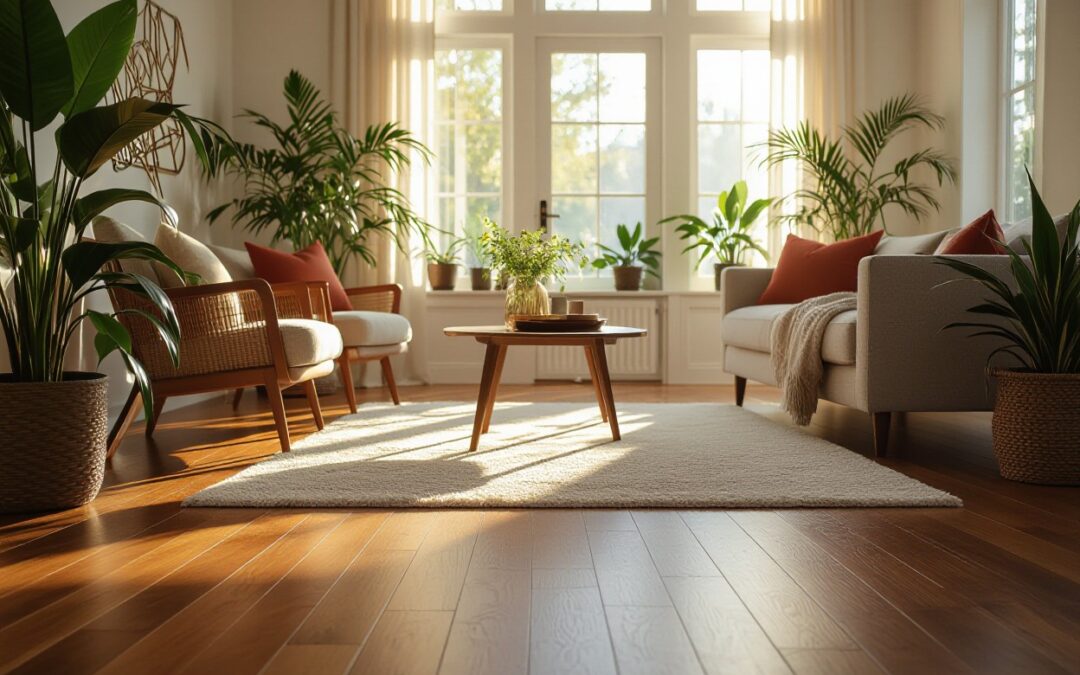
by c4cadmin | Aug 20, 2025 | Flooring
What are the Top 5 Reasons to Choose Hardwood Flooring?
Over time, you’ll see why hardwood flooring is a top choice: it pairs lasting durability and refined style. At Floors Pros, we know that hardwood flooring oak options give classic warmth, engineered hardwood flooring suits moisture-prone rooms, ceramic hardwood flooring tiles mimic wood with stain resistance, and regular how to clean hardwood floors tips plus timely hardwood floor refinishing extend lifespan—so you get beauty, performance, and long-term value for your home.
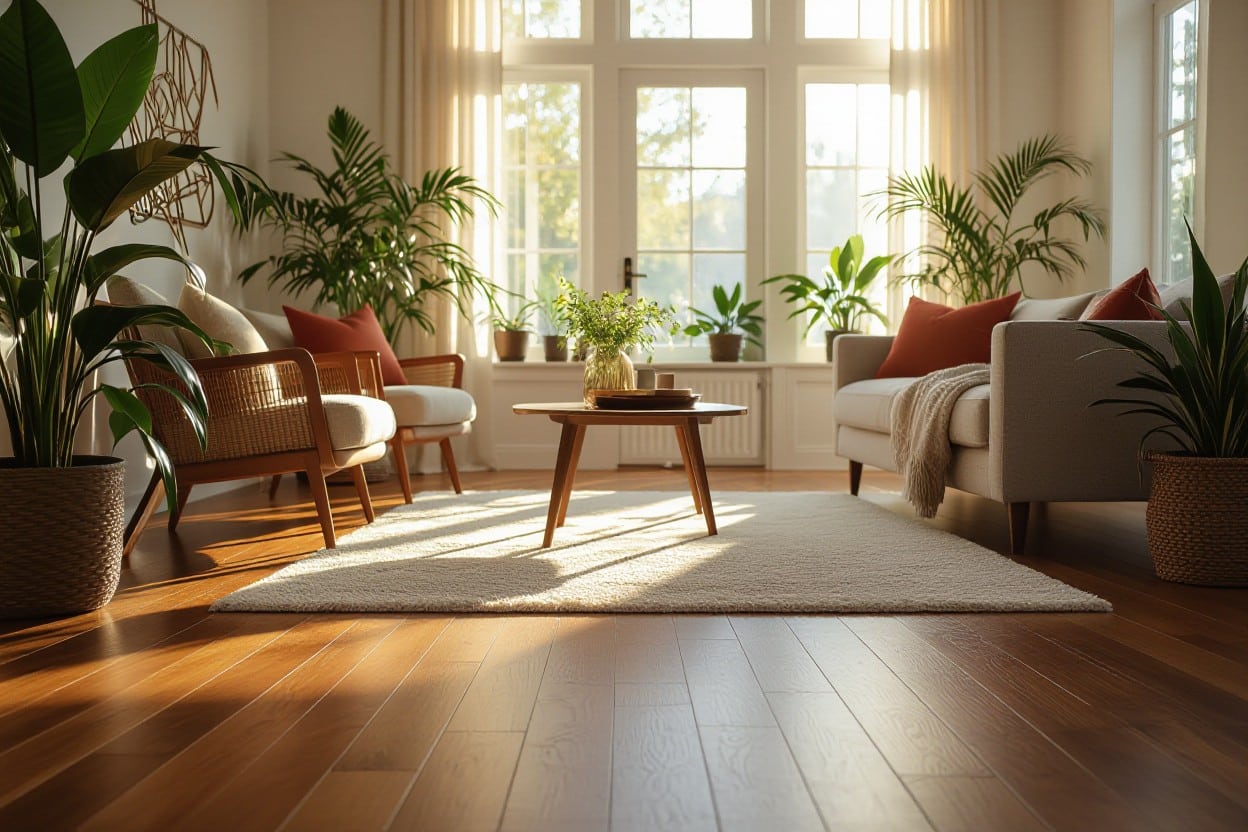
Timeless Aesthetics: The Allure of Hardwood Flooring
Grain, color depth, and longevity combine to give hardwood flooring an enduring appeal you notice the moment you enter a room. Oak remains the most popular choice—white and red oak dominate retail sales due to their durability and grain character—while engineered hardwood flooring offers the same visuals for basements and over radiant heat. Proper hardwood floor refinishing can extend the life of a solid floor for decades, often allowing for 4–8 sand-and-refinish cycles, so your investment pays off over 50–100 years or more.
Natural Beauty and Warmth
Natural grain patterns and tannin-rich tones offer a warmth that synthetic options struggle to replicate; ceramic hardwood flooring tiles can visually mimic wood but lack the genuine texture and aging patina of natural materials. Choose hardwood flooring, such as oak for classic warmth or walnut for rich contrast, and expect the color to mellow with sunlight, adding character. Follow the guidelines on how to clean hardwood floors—using a microfibre mop, pH-neutral cleaner, and minimal water—to keep pores clear and finishes glowing.
Versatile Design Options
Plank widths ranging from 2¼” to 7″ allow you to shift style from traditional to modern, and installation patterns—herringbone, chevron, and straight plank—dramatically change the perceived space. You can choose between matte oil finishes and high-gloss polyurethane. Engineered hardwood flooring offers wider boards and allows for installation below grade. Color stains, species mix (oak, maple, walnut), and edge profiles offer endless combinations, allowing you to tailor flooring to your home’s architecture and resale goals.
For specs, solid oak typically comes as 3/4″ thick, allowing multiple hardwood floor refinishing cycles, while engineered boards feature 2–6 mm wear layers—expect 1–3 refinishes depending on thickness. Click-lock and tongue-and-groove systems impact installation speed; floating installations are suitable for basements, while glue-down installations work well over concrete. Finish choices (water-based low-VOC vs. oil-cured) influence sheen and upkeep, and routine tips, such as how to clean hardwood floors—no steam mops, quick spill cleanup—help preserve your design investment longer.
Durability that Defies Time: The Longevity Factor
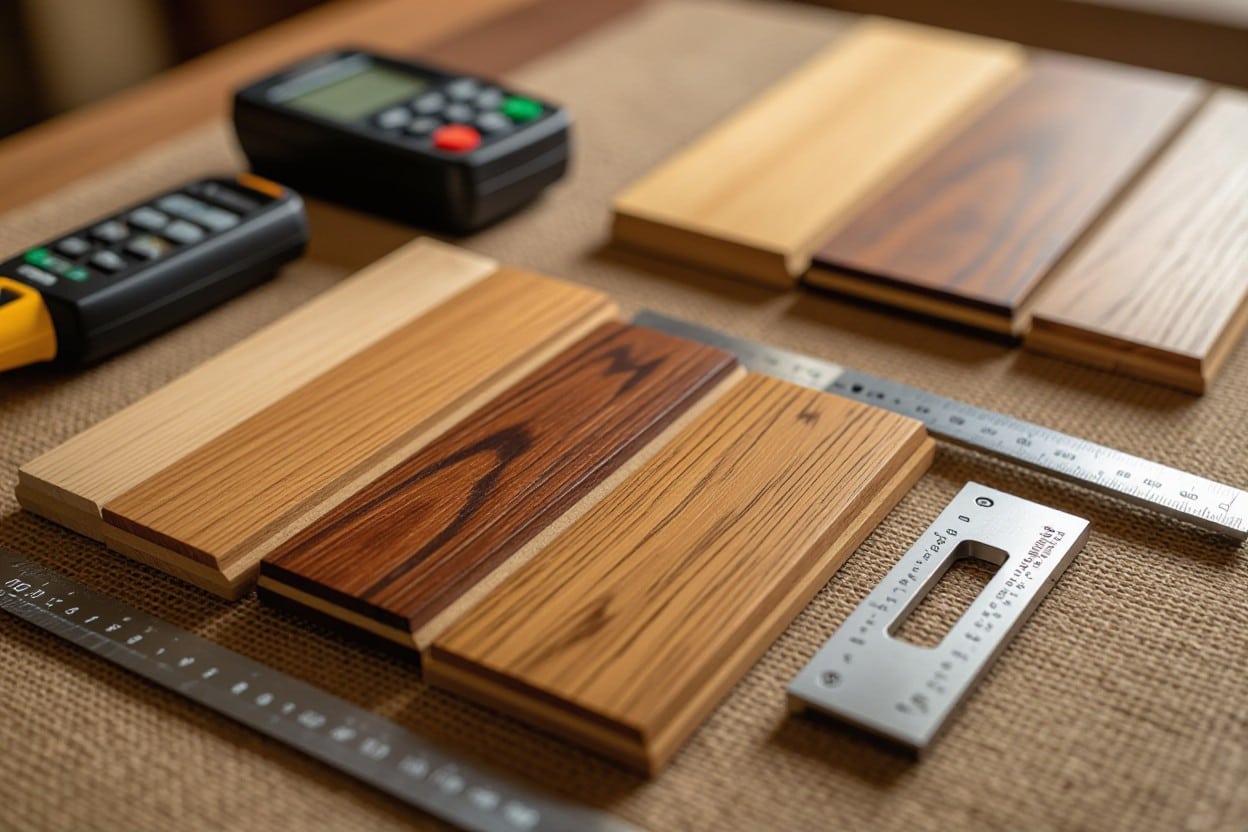
Hardwood flooring can serve your home for decades. Solid oak boards often last 75–100 years with periodic hardwood floor refinishing, while engineered hardwood flooring commonly endures 20–60 years, depending on the thickness of the wear layer. You’ll find that hardwood flooring, such as oak (white oak, Janka 1360; red oak, Janka 1290), holds up to heavy traffic, whereas ceramic tile (wood-look tile) resists moisture but cannot be refinished. Choosing the right species and finish means fewer replacements and more substantial resale value over time.
Resistance to Wear and Tear
Dense species and modern finishes give your floors real resilience. White oak and hickory outperform softer woods in high-traffic zones, and aluminum-oxide factory finishes can reduce visible abrasion by roughly 50–60% compared to old varnishes. Wear-layer thickness on engineered boards (measured in mm) directly correlates with longevity—3–6 mm allows for sanding and refreshing surfaces once or twice, while tile-style ceramic hardwood flooring resists scratches but lacks restoration options.
Ease of Repair and Maintenance
Routine care keeps your hardwood flooring looking its best: sweep or vacuum daily, use a microfiber mop with a pH-neutral cleaner when needed, and avoid steam mops that can raise boards. Small scratches and dents are often repaired with touch-up kits, and boards can be replaced individually. How to clean hardwood floors the right way and timely spot repairs frequently postpone full hardwood floor refinishing for years.
Solid 3/4″ oak floors typically tolerate about 5–7 full sand-and-refinish cycles, restoring surfaces and adding decades, while engineered hardwood flooring with a 2–6 mm wear layer allows 1–3 refinishes. Professional hardwood floor refinishing typically takes 2–4 days for an average room and costs approximately $3–7 per square foot, whereas DIY patching and plank replacement can keep immediate costs low while significantly extending the service life.
Health Benefits: Improving Indoor Air Quality with Hardwood Flooring and Engineered Hardwood Flooring
Hardwood flooring reduces indoor pollutant reservoirs compared to carpet, eliminating trapped dust, pollen, and pet dander that aggravate allergies. Engineered hardwood flooring offers similar benefits with greater moisture tolerance. You can pair hardwood with low-VOC finishes or choose ceramic hardwood flooring (wood-look tile) in high-moisture rooms to keep indoor air cleaner. Regular maintenance and timely hardwood floor refinishing also reduce off-gassing over a floor’s lifetime.
Low Allergen Levels
Hard surfaces discourage dust mites and mold growth, so you’ll see fewer allergen hotspots than on upholstered surfaces; pet dander brushes off oak planks and engineered boards more easily. Use a HEPA vacuum and microfiber dusting, and follow the routine for cleaning hardwood floors—daily sweeping and weekly damp mopping—to remove at least 90% of surface particulates before they become airborne.
Non-Toxic and Eco-Friendly Materials
You can opt for low-VOC water-based finishes and formaldehyde-free engineered hardwood flooring to minimize indoor chemical exposure. Choosing FSC-certified or reclaimed hardwood flooring, such as oak, also reduces environmental impact. Plan hardwood floor refinishing with water-based polyurethanes or natural oils to lower odor and emissions during and after the process.
Look for certifications such as CARB Phase 2 compliance, GREENGUARD, and FSC when selecting materials; many manufacturers now offer engineered hardwood flooring with no added formaldehyde and finishes formulated to meet stringent air-quality standards. If you prefer zero-VOC ceramic hardwood flooring in moisture-prone spaces, that tile emits virtually no VOCs and pairs well with low-emission wood in living areas, giving a balanced, healthy interior.
Value Proposition: Investing in Your Home — Hardwood Flooring
You’ll recover a significant portion of your investment: hardwood flooring often returns 70–80% of installation costs at resale, with well-maintained hardwood floor refinishing and original hardwood or hardwood flooring oak commanding premiums in many markets. Solid and engineered hardwood flooring both outlast carpet, while wood-look options, such as ceramic hardwood flooring, provide moisture resistance for kitchens and bathrooms. Proper how to clean hardwood floors routines and periodic refinishing keep your floors market-ready and preserve long-term value.
High Resale Value
Buyers consistently rank hardwood among top features; surveys show roughly 70% preference for homes with hardwood floors, and agents report faster sales and higher offers for properties with intact oak or recently refinished surfaces. You can leverage species and finish—white oak or quarter-sawn oak often fetch a premium—while engineered hardwood flooring expands appeal in climates where solid wood is less practical.
Cost-Effectiveness Over Time
Upfront costs vary: installed solid hardwood typically runs $6–12 per sq ft, while engineered hardwood flooring often costs $4–8 per sq ft; you spread that expense over decades through longevity and refinishing. Ceramic hardwood flooring options reduce replacement in wet areas, and choosing durable finishes lowers lifecycle costs versus frequent carpet replacement.
Expect long-term savings: Refinishing solid oak typically costs $3–5 per sq ft and can be done 3–4 times, extending the useful life beyond 50 years. Engineered hardwood flooring with a 2–3 mm wear layer usually sands once, providing 15–30 years of use. Daily care—sweeping, a damp microfiber mop, and using pH-neutral cleaners outlined in guides on how to clean hardwood floors—keeps maintenance low. In one example, replacing carpet with oak in a 1,500 sq ft home raised perceived value enough to offset installation at resale.
Sustainability Matters: Eco-Conscious Choices for Hardwood Flooring and Engineered Hardwood Flooring
Renewable Resources
You can select hardwood flooring oak sourced from responsibly managed forests, many certified by FSC or PEFC, which together protect over 200 million hectares globally; reclaimed planks and salvaged oak cut overnight the need for new timber and give unique character. Engineered hardwood flooring stretches scarce species by using a thin oak veneer over plywood, letting you enjoy oak aesthetics while reducing demand for slow‑growing solid timber.
Reduction of Environmental Impact
Choosing hardwood over high‑temperature fired alternatives like ceramic hardwood flooring often lowers lifecycle emissions because wood stores carbon through its service life; solid oak floors that you refinish last decades, cutting replacement waste. Proper maintenance—how to clean hardwood floors with a microfiber mop and pH‑neutral cleaner, avoiding excess water—keeps boards healthy and delays replacement, reducing your home’s embodied environmental footprint.
Hardwood floor refinishing multiplies sustainability: solid planks can typically be sanded and refinished 3–7 times, adding 20–50 years to their lifespan, while engineered hardwood flooring with veneers over 2 mm can usually be refinished once. That extended service life means fewer new materials and less landfill. Projects that specify reclaimed oak or certified engineered options often report a 30–60% reduction in embodied carbon versus full replacement with tile or vinyl over a 50‑year cycle.
Conclusion
Considering all points, you’ll find that hardwood flooring delivers lasting value, a warm style, and easier maintenance when you follow clear how-to-clean-hardwood-floors tips and schedule hardwood floor refinishing as needed. Options like hardwood flooring, oak, or engineered hardwood flooring provide varied looks and durability, while ceramic tile-style planks add moisture resistance, allowing you to select the best balance of appearance, lifespan, and resale appeal for your home. With Floors Pros, you can be sure you’ve made a choice that will last.
FAQs
Q: What are the top five reasons to choose hardwood flooring?
A: Hardwood flooring offers long-term durability, timeless aesthetics, improved home resale value, easier maintenance than many coverings, and the ability to be refreshed through hardwood floor refinishing. Solid or hardwood flooring options made from oak provide a classic grain and color, while engineered hardwood flooring offers more installation flexibility for basements or over concrete. For areas that require extra water resistance, wood-look options, such as ceramic hardwood flooring (wood-effect ceramic or porcelain), combine the appearance of wood with the performance of tile.
Q: How does hardwood flooring compare for durability and longevity?
A: Solid hardwood and hardwood flooring, oak is both very durable when properly installed and maintained; dense species and finishes resist wear. Engineered hardwood flooring features a stable plywood core that resists seasonal movement, making it suitable for wider plank installations and increasing longevity in variable climates. Ceramic hardwood flooring won’t scratch like wood and is ideal in high-moisture zones; however, it won’t be refinished like wood, so choose based on expected wear and maintenance preferences.
Q: What design and style advantages does hardwood flooring provide?
A: Hardwood flooring offers vast design flexibility: species (including hardwood flooring oak), stains, plank widths, and finishes allow both contemporary and traditional looks. You can mix patterns (herringbone, chevron), combine with area rugs, or match trim and cabinetry. Engineered hardwood flooring utilizes real wood veneers, allowing you to retain authentic grain while offering more installation options. In contrast, ceramic hardwood flooring replicates wood visuals in rooms where real wood may not be ideal.
Q: How do I care for hardwood floors and what does maintenance involve?
A: Simple, regular care keeps hardwood flooring looking its best: sweep or vacuum frequently, use a microfiber mop, and follow manufacturer recommendations for cleaning solutions—this is guidance on how to clean hardwood floors effectively. Avoid excess water and harsh chemicals. Address scratches with spot repair and schedule hardwood floor refinishing when wear is widespread. For engineered hardwood flooring, follow the layer/thickness guidelines for refinishing. Ceramic hardwood flooring, on the other hand, requires grout and tile maintenance rather than refinishing.
Q: Will choosing hardwood flooring increase my home’s value and is refinishing an option?
A: Yes—hardwood flooring typically raises perceived value and buyer appeal, especially durable species like hardwood flooring oak. Hardwood floor refinishing allows you to remove surface wear and update the color without full replacement, thereby extending the lifespan for decades. Engineered hardwood flooring can also be refinished, depending on veneer thickness, though fewer times than solid planks. Ceramic hardwood flooring can enhance durability and reduce long-term maintenance costs. Still, it won’t be refinished like wood, so factor this into lifecycle and resale considerations.
Ready to transform your home with the timeless beauty of hardwood flooring? Floors Pros offers a comprehensive range of flooring services, including new installations, expert hardwood floor refinishing, and specialized solutions for both residential and commercial spaces. Whether you’re interested in the classic appeal of hardwood flooring, the versatility of engineered hardwood flooring, or the durability of ceramic hardwood flooring, our team is here to help you choose the perfect material and style for your needs. We also provide professional guidance on how to clean hardwood floors, ensuring your investment lasts for years.
Contact us today or visit our showroom to get started on your dream floor.
Affordable and Creative New Design Floor Ideas For Your Home
5-Step Interior Remodeling Process: Best Guide for Homeowners
Flooring Allen TX: Quality Solutions Every Style
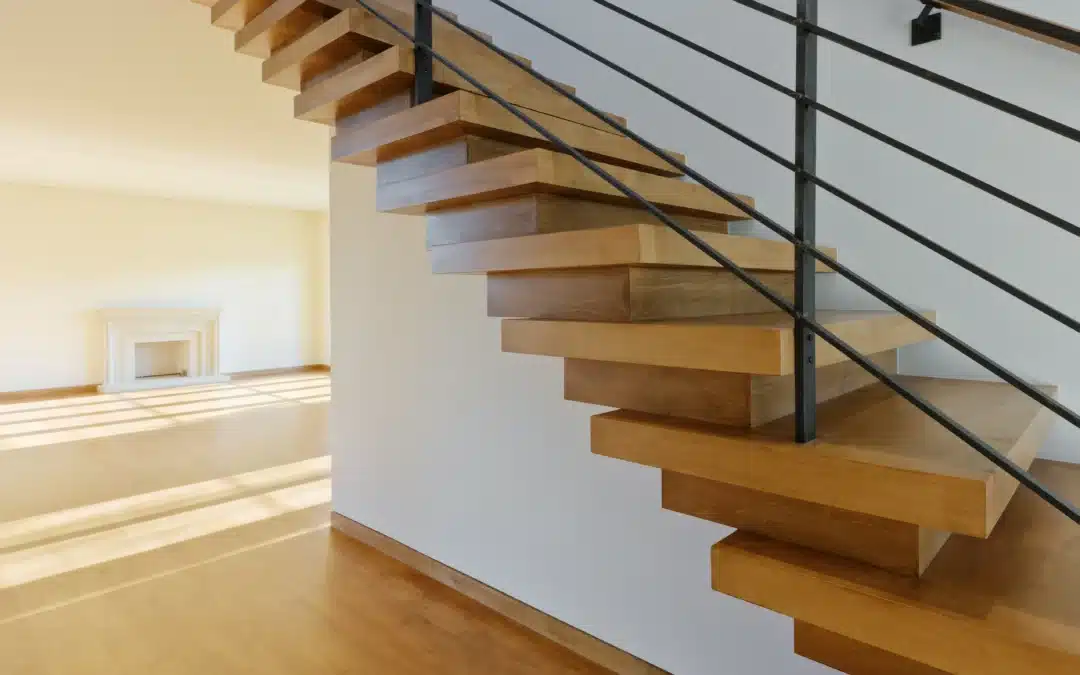
by seo@click4corp.com | Aug 6, 2025 | Uncategorized
A wide variety of flooring options for stairs is available today, making it easier for you to find the perfect match for your home’s style and functionality. At Floors Pros, choosing the right floor covering for stairs can enhance both safety and aesthetics. Whether you’re exploring durable stair treads or considering the benefits of installing laminate flooring on your staircase, this post will help you discover practical stair flooring ideas that suit different budgets and design preferences, enabling you to upgrade your stair flooring efficiently and effectively.
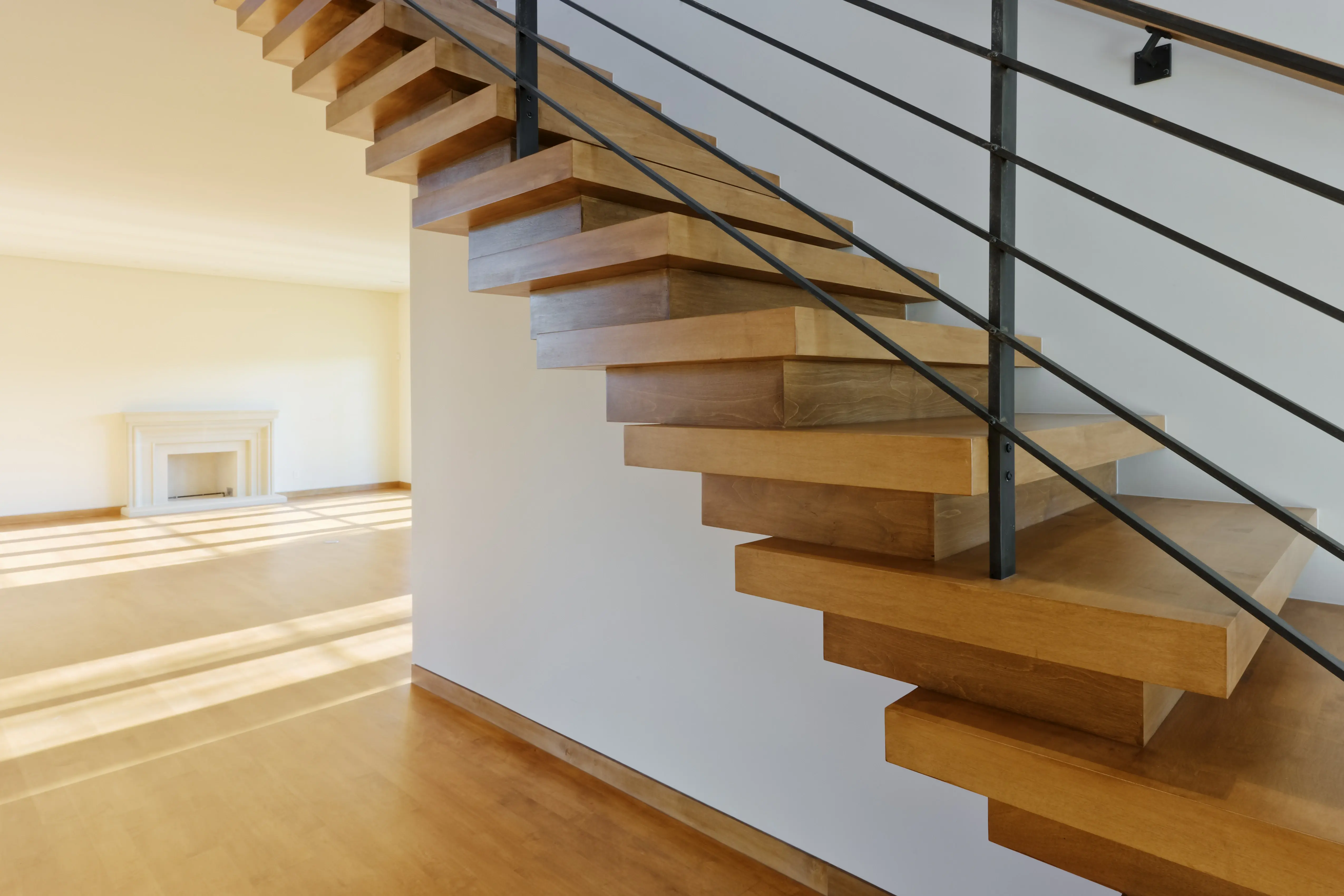
The Aesthetic Appeal: Choosing Style Over Sturdiness
Exploring flooring options for stairs often leads to a style-versus-sturdiness debate, where the visual appeal can take precedence. Materials like hardwood or patterned tiles elevate the stairway’s look, making it a centerpiece of your home’s interior. While durability remains crucial, prioritizing style transforms bare stair treads into a design statement that complements your personal taste and interior trends. Embracing flooring with creative finishes and unique textures allows you to showcase your aesthetic preferences without compromising the functionality of your stairs.
Visual Dynamics: The Impact of Color and Texture
Your choice of color and texture has a significant impact on the perceived space and mood surrounding your stairs. Darker hues with rich wood grains lend warmth and sophistication, while lighter tones can open up tight stairwells, enhancing natural light. Textured surfaces, including brushed woods or embossed vinyl, introduce tactile interest and reduce slipperiness. Combining these elements thoughtfully amplifies the visual dynamics, turning everyday stair flooring into an engaging visual journey that draws the eye upward.
Cohesive Design: Ensuring Style Matches Home Decor
Stair flooring should seamlessly blend with your home’s existing decor to create a smooth transition between levels. Selecting materials and colors that echo your flooring downstairs—or complement adjacent walls and furnishings—unifies the overall aesthetic. For instance, matching laminate flooring on stairs with hardwood flooring in the living areas fosters cohesiveness. At the same time, a contrasting color palette might highlight the stairway as a distinctive architectural feature. This harmony between your floor covering for stairs and surrounding spaces reinforces your home’s professionalism and charm.
Achieving a cohesive design involves understanding the materials’ tones, patterns, and finishes that are prevalent throughout your home. Choose floor and decor stair treads that mimic the nearby hardwood’s grains or select neutral-colored carpets that balance bright wall colors. Evaluating light conditions in stairwells also guides whether to maintain consistent hues or introduce a statement color for visual interest. When installing laminate flooring on stairs, coordinating the plank width and grain direction with adjacent rooms preserves design continuity, elevating the stairway from a transitional space to an integral design element.
Safety First: Flooring Options That Prioritize Traction
Choosing flooring options for stairs demands a keen focus on traction to prevent slips and falls. Materials such as textured vinyl, rubber, and non-slip-treated wood significantly improve grip. Consider carpeted stair treads, which add softness and traction simultaneously. Additionally, installing laminate flooring on stairs with a matte finish offers durability without sacrificing safety. Prioritizing this flooring for stairs not only enhances security but also complements your home’s aesthetic with subtlety and style.
Non-Slip Surfaces: Championing Safety for Every User
Non-slip stair flooring ideas center on surfaces designed to maximize contact and minimize the risk of slipping. Options such as anti-slip stair treads with abrasive coatings or stair nosing with textured edges protect users of all ages. Materials like cork and rubber inherently resist slipping, making them ideal for use with children or elderly family members. Incorporating these materials supports an environment where every step is stable and secure.
Slip-Resistant Technology: Innovations in Flooring
Advancements in slip-resistant technology have transformed floor and decor stair treads by integrating micro-engraved patterns and polymer additives that enhance traction. You’ll find flooring that meets rigorous safety standards yet remains stylish. Products embedding advanced anti-slip coatings offer added resistance without compromising the floor’s visual appeal. These innovative features in stair flooring options for stairs allow you to safeguard your staircase while maintaining its design integrity.
Beyond traditional materials, slip-resistant technology now incorporates nanotechnology and smart surfaces that react to moisture, increasing friction when conditions become risky. Some flooring manufacturers have developed reactive stair treads that adjust their grip in real-time, significantly reducing the potential for accidents. Additionally, UV-cured anti-slip coatings provide a durable, invisible layer of protection on hardwood and laminate stairs, extending safety without visible alterations. Integrating these cutting-edge innovations into your stair flooring ideas ensures a contemporary solution that expertly balances function and form.
Durability Duel: Long-Lasting Choices for High Traffic
Stairs endure constant foot traffic, so opting for flooring options that withstand wear and tear is imperative. Materials such as hardwood, luxury vinyl plank (LVP), and porcelain tile stand out for their exceptional resilience. Hardwoods, such as oak and maple, offer both strength and a classic appearance. LVP mimics natural textures while resisting scratches and moisture, making it ideal for busy households. Porcelain tiles provide a rigid, scratch-resistant surface but may require anti-slip treatments. Your choice in floor covering for stairs should strike a balance between style and durability, ensuring your stair flooring holds up over time without compromising safety or aesthetics.
Resiliency Ratings: How Different Materials Perform Under Pressure
Evaluating stair flooring ideas based on resiliency ratings helps pinpoint which materials can withstand pressure and impact. For example, solid hardwood scores high on the Janka hardness scale, indicating excellent resistance to dents and scratches. Laminate flooring, especially when installing laminate flooring on stairs with a high AC rating (abrasion class 3 or above), delivers solid wear resistance for moderate traffic. Carpet offers softness but wears out faster in high-traffic areas. Vinyl and tile provide durable, low-impact surfaces, with vinyl excelling in environments with high moisture levels. Prioritize these performance metrics to match your stairway’s unique demands.
Maintenance Matter: Balancing Upkeep with Longevity
Maintenance requirements often influence how long flooring options for stairs remain attractive and functional. Hardwood floors need periodic refinishing and prompt cleanup of spills to avoid damage. Laminate stair flooring requires gentle cleaning to prevent surface wear, but it resists staining effectively. Vinyl offers effortless maintenance with simple sweeping and occasional mopping, making it ideal for those who prefer low-maintenance upkeep. Tiles require regular grout sealing to maintain appearance and durability. Weighing these upkeep needs against expected longevity will help you select stair flooring that stays beautiful without becoming a chore.
Balancing upkeep with longevity involves understanding how each floor covering responds over time. Hardwood stair treads can be sanded and refinished multiple times, significantly extending their life, but frequent refinishing may disrupt daily life. Laminate and vinyl resist many common household stains and scratches, lessening intensive upkeep, though they lack refinish options. Tiles, while durable, depend heavily on proper grout care to prevent discoloration and cracks. Aligning your maintenance preferences with floor and decor choices ensures your stairs continue to impress without excessive effort.
Eco-Friendly Alternatives: Sustainability in Stair Design
Choosing eco-friendly flooring options for stairs allows you to reduce your environmental impact while enhancing your home’s aesthetic. Natural materials like bamboo and cork provide renewable, biodegradable options that complement modern stair flooring ideas perfectly. Moreover, reclaimed wood offers a charming and sustainable way to add character and durability. Incorporating eco-conscious floor covering for stairs transforms functional elements into earth-friendly features without compromising style. Your commitment to sustainable stair design is reflected in every decision, including how you approach installing laminate flooring on your stair treads with low-VOC adhesives and finishes.
Sustainable Materials: Options That Reduce Environmental Footprint
You can select materials like bamboo, rapidly renewable and durable, or cork, which provides natural cushioning and sound absorption. Reclaimed hardwood also stands out as a sustainable flooring option for stairs, often sourced from old barns or factories and re-milled to extend the material’s lifespan. These materials reduce reliance on virgin resources, lower embodied energy. They are often treated with non-toxic finishes to maintain indoor air quality. Combining these choices with eco-friendly stair tread installation practices ensures your floor and decor stair treads align with sustainability goals without sacrificing performance.
Lifespan vs. Sustainability: Weighing Performance Against Eco-Impact
Balancing the longevity of your floor covering for stairs with its ecological footprint is key. Durable materials like hardwood may have a higher initial environmental cost but last for decades, reducing waste. Conversely, quicker-to-wear options, such as certain laminates, require more frequent replacement, contributing to landfill buildup. Prioritizing products with eco-certifications and high durability ensures your investment in stair flooring ideas remains sound, blending sustainability with cost-effectiveness over time.
You’ll find that evaluating lifespan alongside eco-impact involves considering maintenance requirements and reusability. For example, sustainably harvested hardwood can be refinished multiple times, substantially extending its functional life, while low-quality laminates not only wear out faster but also present recycling challenges. Additionally, innovations in bio-based resins and the incorporation of recycled content in laminate flooring are making it more eco-friendly, thereby enhancing its appeal for stair installations. Taking a holistic view allows you to select stair flooring options for stairs that uphold your environmental values while delivering the durability and aesthetic quality you desire.
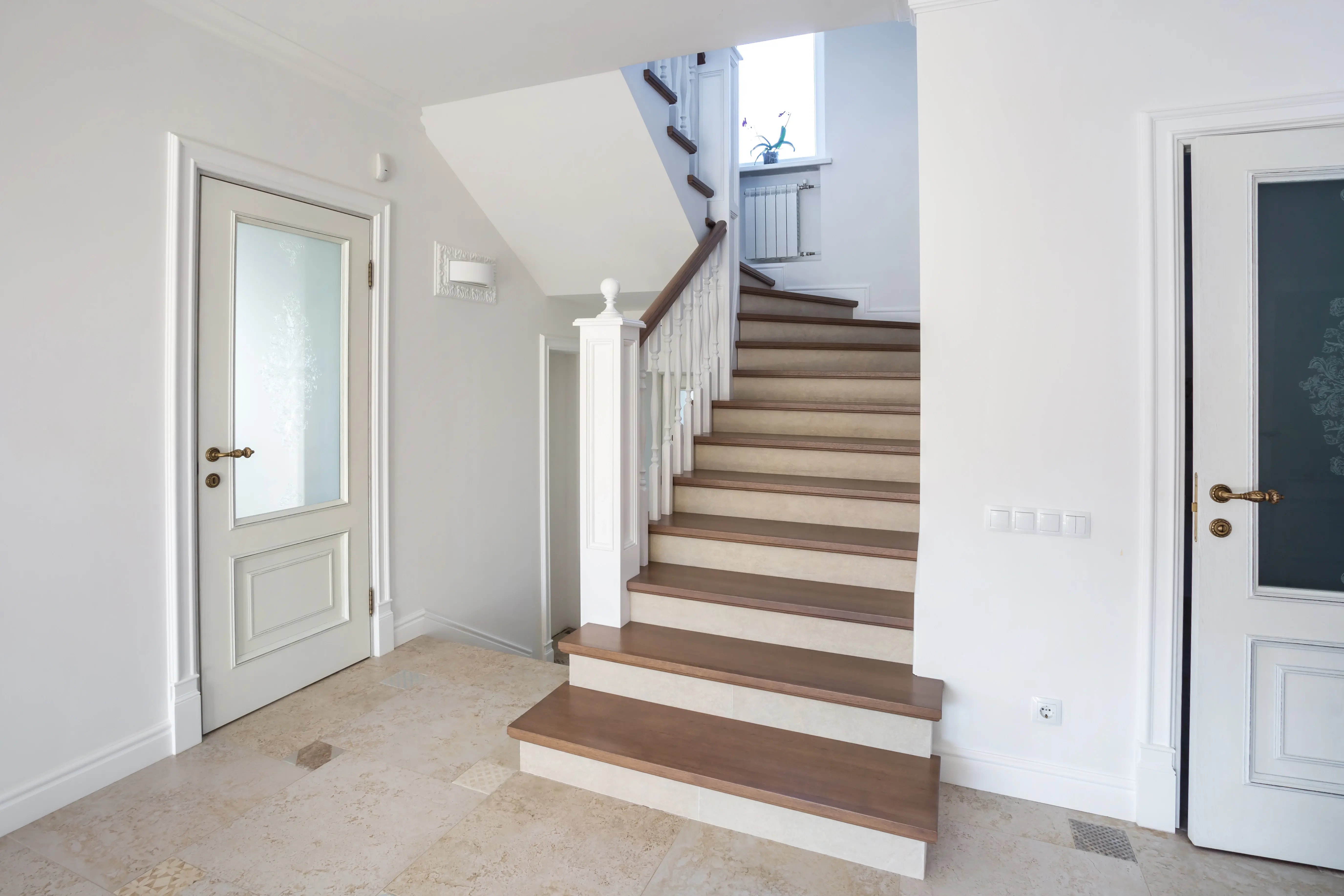
Cost Efficiency: Budgeting for Quality Flooring
Balancing cost and quality becomes vital when selecting flooring options for stairs. Materials like engineered hardwood offer a sweet spot, blending durability and aesthetic appeal without soaring prices, whereas premium stone can command steep upfront fees but last decades with minimal upkeep. Your choice affects both installation expenses and long-term maintenance, so anticipating wear patterns from foot traffic and household activity lets you optimize your investment. Selecting resilient floor covering for stairs that require fewer repairs and offer easy cleaning not only protects your wallet but keeps stair treads looking fresh year after year.
Upfront Costs vs. Long-Term Investment: Decoding the True Price
Initial installation prices often tempt you toward less expensive solutions, such as vinyl or carpet. Yet, factoring in durability and maintenance changes the calculus substantially. For example, high-quality laminate flooring may cost more upfront than basic carpet, but it offers superior resistance to scratches, spills, and daily wear, thereby reducing the frequency of replacement and maintenance. A case study reveals that selecting a slightly pricier material can extend a staircase’s lifespan by 10 years, resulting in significant savings on refurbishment or replacement costs in the long run.
Value in Versatility: Flooring That Adapts to Changing Needs
Some flooring options for stairs excel by morphing with your lifestyle. Laminate, for instance, enables easy swapping and repairs if you decide to update room aesthetics or if damage occurs. Installing laminate flooring on stairs provides a uniform finish that complements various interior styles, making it a versatile choice as your home evolves. Vinyl also offers water resistance and stain-proof qualities, making it ideal for multipurpose areas and providing peace of mind when children or pets are part of the household.
Expanding on versatility, floor covering for stairs, like engineered hardwood, presents a compelling case. Its layered construction enhances stability across temperature and humidity changes, allowing it to maintain its form in both open-concept homes and enclosed stairwells. This adaptability shields against delamination and warping, which are more common in solid wood, delivering a longer-lasting investment. Moreover, with countless finishes available, you can seamlessly update the stairway’s look over time without replacing the entire surface, securing style continuity alongside durability.
Summing up the Best Flooring Options for Stairs Now
Currently, selecting the best flooring options for stairs involves striking a balance between durability, safety, and style to suit your home’s specific needs. At Floors Pros, we guide our customers through popular stair flooring ideas like hardwood, laminate, and engineered wood, which offer both aesthetic appeal and resilience. Floor covering for stairs can also include carpet runners for added traction or durable stair treads to enhance safety and comfort. When installing laminate flooring on stairs, we ensure precise fitting and secure attachment to prevent slips. By carefully selecting your stair treads and materials, you can achieve a beautiful and functional staircase that complements your interior.
FAQ
Q: What are some popular flooring options for stairs that combine durability and aesthetics?
A: The best flooring options for stairs often prioritize both durability and visual appeal. Hardwood is a top choice due to its classic appearance and exceptional durability. Engineered wood offers a similar appearance with enhanced moisture resistance. Laminate flooring for stairs is also gaining popularity because it mimics the look of hardwood while being budget-friendly and resistant to scratches. Additionally, carpet can add softness and reduce noise, while vinyl planks provide waterproof and easy-to-clean alternatives. When selecting stair flooring ideas, consider the level of traffic and how well the material complements your overall interior design.
Q: How can I choose the right stair flooring ideas that match my home’s interior?
A: When exploring stair flooring ideas, it’s helpful first to define the style and color palette of your space. Light-colored woods can brighten staircases and create a modern feel, while darker woods add warmth and sophistication. For contemporary designs, laminate flooring on stairs that resembles concrete or stone textures can be eye-catching. Combining materials, such as using wood stair treads with carpet runners, can also offer both style and functionality. Visiting a floor and decor store to view samples under natural light can assist in making a well-informed choice that complements your home.
Q: Are there specific floor covering options for stairs that offer safety and require minimal maintenance?
A: Safety on staircases is vital, so choosing floor covering for stairs that provides good traction is essential. Carpet stair treads are excellent for reducing slips and falls, and can be easily replaced if they become worn. Non-slip vinyl is another option that offers both durability and moisture resistance, making it ideal for busy households. When installing laminate flooring on stairs, opting for products with textured surfaces can enhance grip. Additionally, applying non-slip adhesives or stair nose trims can improve safety without compromising style.
Q: What are the key considerations when installing laminate flooring on stairs compared to other flooring types?
A: Installing laminate flooring on stairs requires attention to detail to ensure both safety and longevity. Unlike flat flooring, stairs require stair treads and risers to be cut precisely to ensure a proper fit. Additionally, stair noses are vital components that provide a finished look and prevent edge damage. Laminate must be firmly secured in order to avoid movement, which can cause wear or safety hazards. It’s also advisable to use an underlayment designed for stairs to reduce noise and provide cushioning. Overall, laminate offers an affordable and attractive option when properly installed.
Q: Where can I find a wide selection of floor and decor stair treads to customize my staircase?
A: Many specialized retailers and home improvement stores offer a broad range of floor and decor stair treads in various materials such as wood, laminate, vinyl, and carpet. Online platforms also provide extensive selections, complete with detailed product specifications and customer reviews. Visiting a showroom allows you to see and feel the textures, which can help in making the right choice for your stairs. Additionally, experts at these stores can provide guidance on selecting stair treads that match your existing flooring and discuss installation requirements, ensuring your staircase is both visually appealing and functional.
Ready to transform your staircase with beautiful and safe flooring? At Floors Pros, we specialize in a wide range of flooring options, including hardwood, engineered wood, laminate, and luxury vinyl, all of which are perfect for any stair project. Serving the Allen area, our experts are here to help you choose the ideal floor covering for your stairs, ensuring a perfect balance of style, durability, and safety.
For a professional installation that you can trust, call us today or visit our showroom to explore our extensive selection and take the first step toward a stunning new staircase.
Affordable and Creative New Design Floor Ideas For Your Home
Interior Painting Services: Should You DIY or Hire a Top Pro?
Bathroom Renovation Near Me: Essential Tips for Lasting Value



